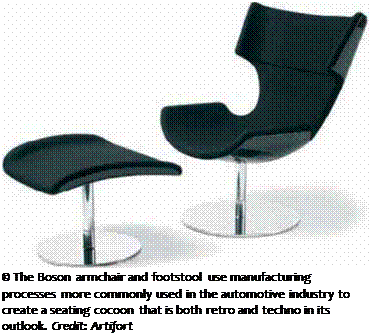 While working with a company that develops prototype cars for Renault and other French car companies, Norguet became inspired by seeing how they fabricated fiberglass, making structures that were both thin and strong. “I took the material from its manufacturing environment and applied it to the design world,” says Norguet.
While working with a company that develops prototype cars for Renault and other French car companies, Norguet became inspired by seeing how they fabricated fiberglass, making structures that were both thin and strong. “I took the material from its manufacturing environment and applied it to the design world,” says Norguet.
The borrowing of materials from one arena and using them in another is common for Norguet, who started his career designing window displays and creating special events for Louis Vuitton. He has since moved freely in the worlds of fashion and luxury goods, architecture and interiors, as well as product and furniture design. Recent projects include designing new event space and showrooms for Renault, window displays for Van Cleef & Arpels, retail stores for Marithe and Frangois Girbaud, and cosmetic products for J. P. Gaultier, as well as furniture, carpets, and lamps for a variety of well-known manufacturers. Norguet has also participated in several group design shows. He points out that his “Rive Droit” seating system was inspired by watching a television program on Italian textile design and thinking how much fun it would be to mix fashion and furniture. “I am inspired by many sources and mix them all quite freely,” he says.
After seeing some of the possibilities offered by fiberglass, Norguet used computer graphics to conceive the chair. “The idea was to work out an organic form that could be reassuring and cocoonlike, and also to optimize the material so we could make it as thin as possible,” he says, describing the process. “I wanted to use a minimum of matter to create a maximum of aesthetic.” He then brought the design to the car manufacturer, which made prototypes that went to the furniture manufacturer, Artifort. Artifort was interested in the chair but didn’t have the technology to manufacture it, so they went back to the car company and both companies worked on realizing Norguet’s vision together. According to Norguet, “That was what this design is all about: to mix the industrial world with the design world.”
Norguet points out that there was a bit of “. . . culture shock in this process. We went in to this big industrial company and brought this design for a piece of furniture, which is of course on a much lesser scale. Of course they were interested,” he says, “because it seemed like a crazy idea, but a very interesting one. It was really funny to see a machine making a car, and then two hours later, making a mold for a chair.”
|
12 DESIGN SECRETS: FURNITURE |
|
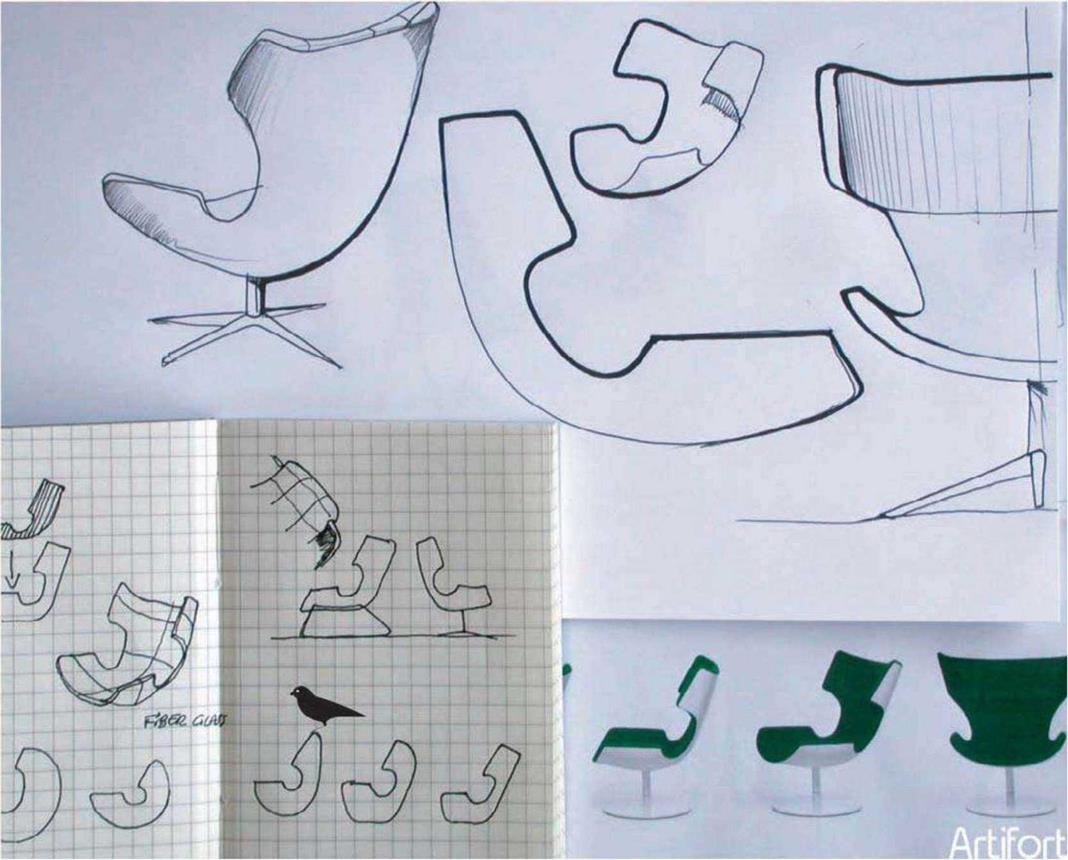
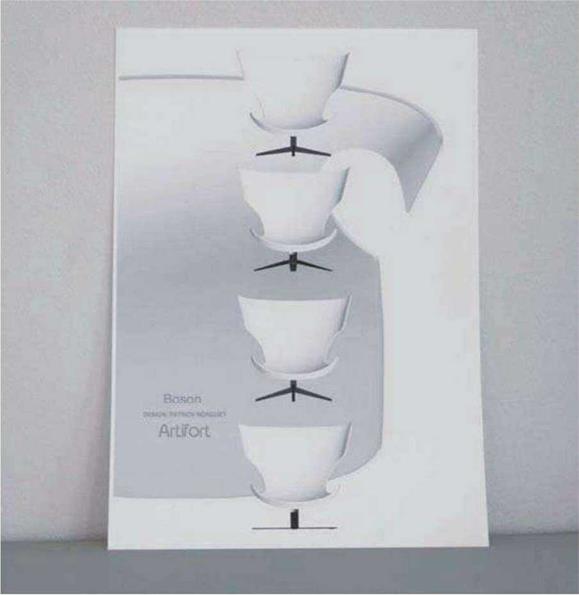 0 Preliminary sketches show the Boson’s unique curvilinear shape, with arm supports cut out of, rather than added onto, the fundamental form. While different foundations were considered, including feet, production economy dictated setting the chair on a circular stand. Credit: Patrick Norguet Studio
0 Preliminary sketches show the Boson’s unique curvilinear shape, with arm supports cut out of, rather than added onto, the fundamental form. While different foundations were considered, including feet, production economy dictated setting the chair on a circular stand. Credit: Patrick Norguet Studio
(<£) Computer renderings show the sleek, slender, and supportive back, which embraces the seated person. The faintly automotive feel to the curves and cutouts reflect the manufacturing process as much as the design sensibility. Credit: Patrick Norguet Studio
The manufacturing process offered its own challenges, especially because of Norguet’s goal to make the most slender profile possible, and still have the chair be strong enough to support someone. “We had to find the best technological solution to fit the best aesthetic solution,” he points out.
The exterior of the Boson chair is made of white fiberglass that can be painted any color. Foam is injected onto the fiberglass shell and then upholstered. Originally, the chair was designed to have feet, but to achieve economy of shape and contain costs, the feet were replaced with a stand and circular base. Norguet prefers the footed version and hopes to offer the chair in both options before too long. Either way, the resulting shape hearkens both to the past and the future. “Aesthetically, it reminds us of ’60s design,” says Norguet. “There’s a wink to the ’60s because of its organic form, but the material and manufacturing make it futuristic.”
Then, just to add some mystery to the already space age, improbable nature of the overall aesthetic, there’s the name of the chair. A Boson is a theoretical, fundamental particle associated with a theoretical, quantum field, neither of which has yet been proven to exist, despite decades of research by physicists. Norguet finds this all very intriguing.
Of course, the Boson chair is quite concrete and applicable in a wide variety of real-life settings. Norguet envisions the chair as a comfortable addition to environments as varied as an airport lounge or a family home. “I see an accumulation of Boson chairs,” he says. “Not just one, but as a cluster of little islands where people can feel private and relaxed.”
While on this project Norguet had complete freedom to design wherever his vision and the manufacturing process took him. He also finds designing to a client brief equally stimulating and challenging. He points out that when a client has their own agenda
concerning aesthetics, or there are limitations imposed by technology or marketing, these very constraints can provide their own inspirations. “These cases are interesting,” he says, “because when you are limited, it boosts your creativity. Working on a brief means working with other people’s ideas and meeting other people and looking into other technologies. It’s about exploration of other possibilities and other cultures, and that’s inspiring.”
Norguet describes his design process as “. . . very intellectual, so things end up being very coherent in the end. The idea is to approach every project in a neutral way and not have a recipe or reflex.” And how does he keep himself fresh and neutral? “By forgetting everything that’s come before.”
|
|
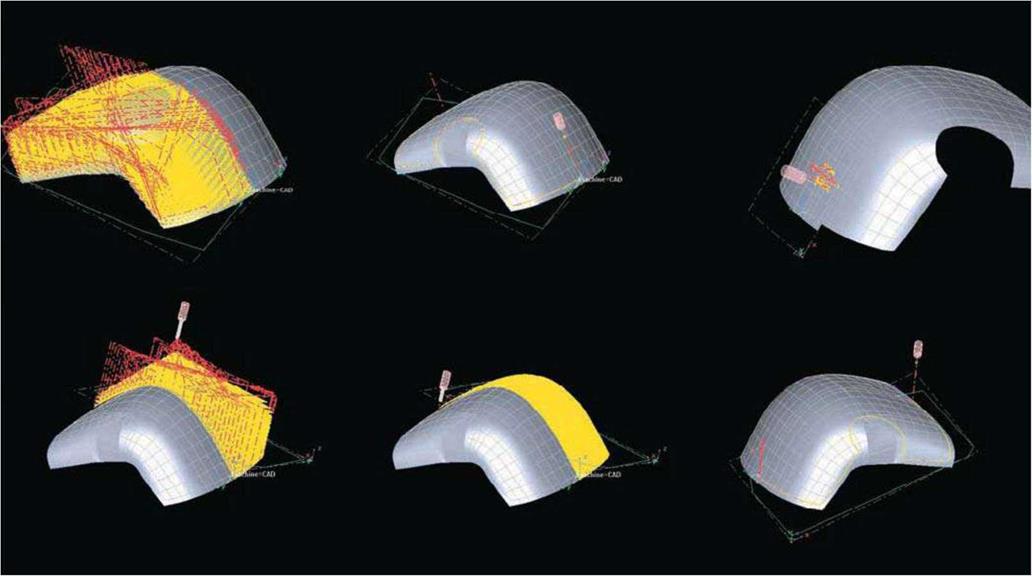
|
14 DESIGN SECRETS: FURNITURE |
|
Using a resin material called LAB (liquid adhesive bond), the manufacturer uses a milling machine to make a form that will be used to shape the fiberglass —a kind of mold for the mold.
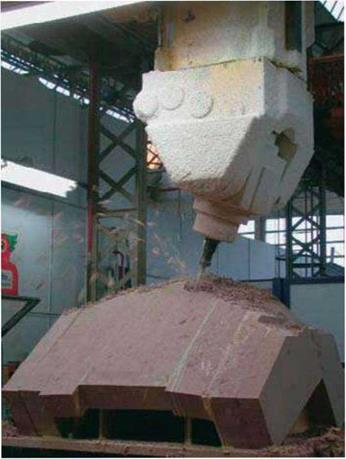
 |
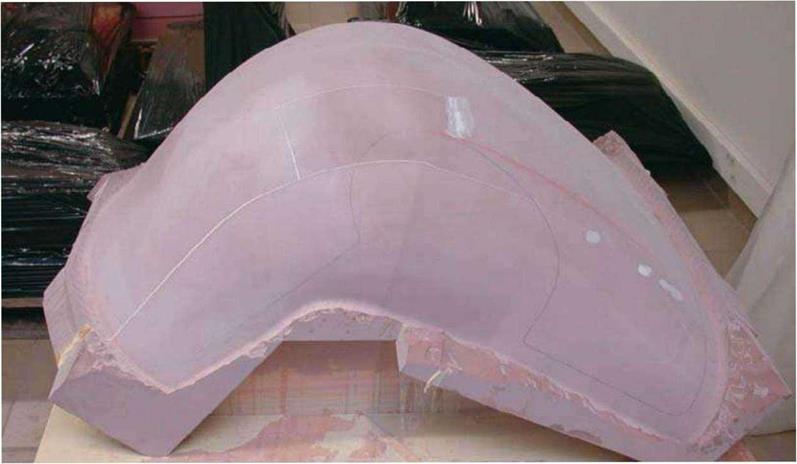 |
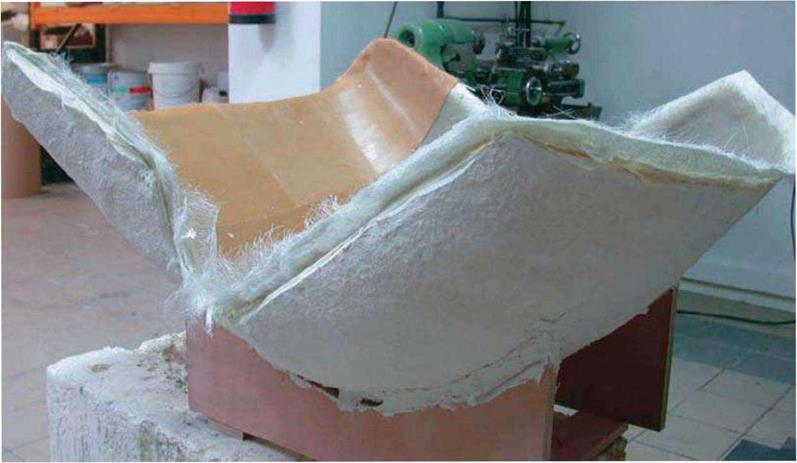
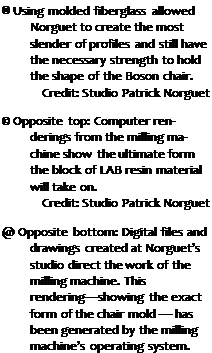 |
Credit: Studio Patrick Norguet




